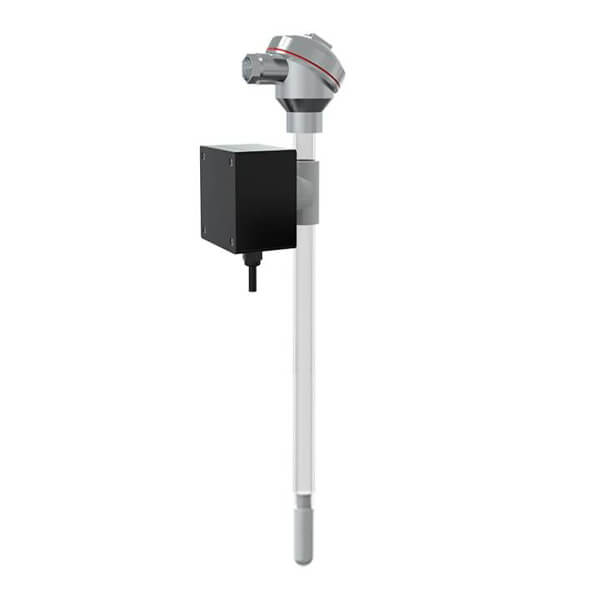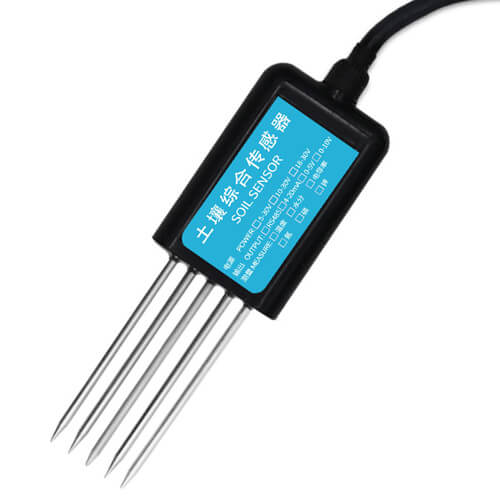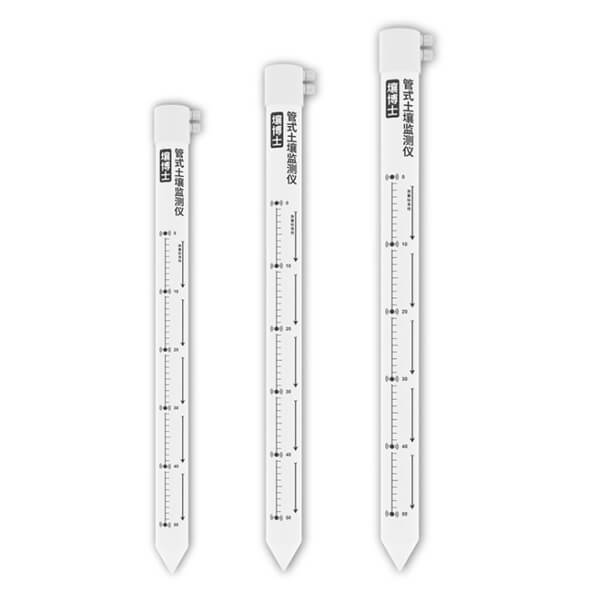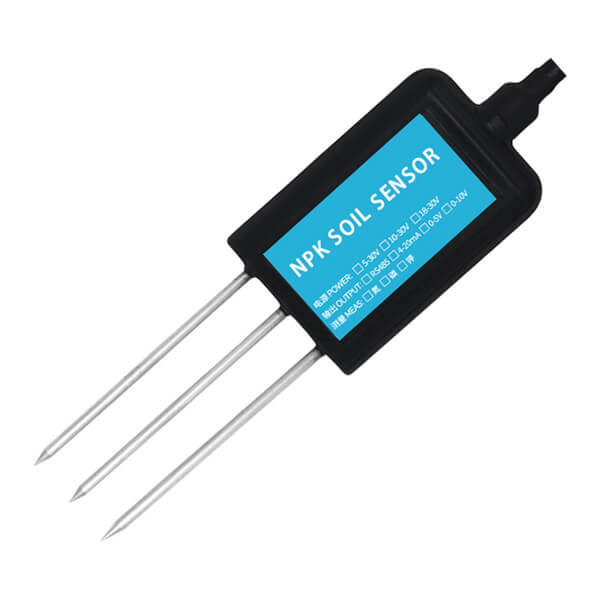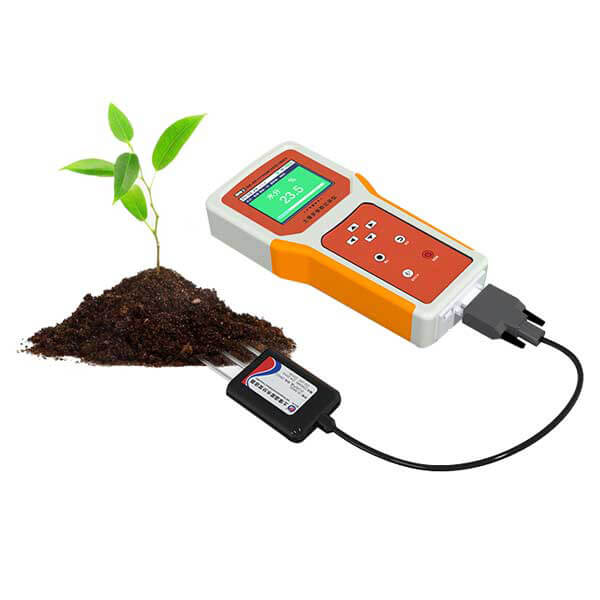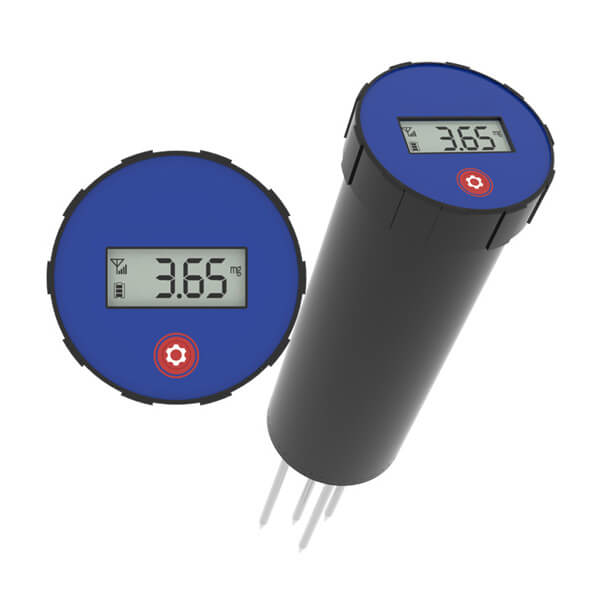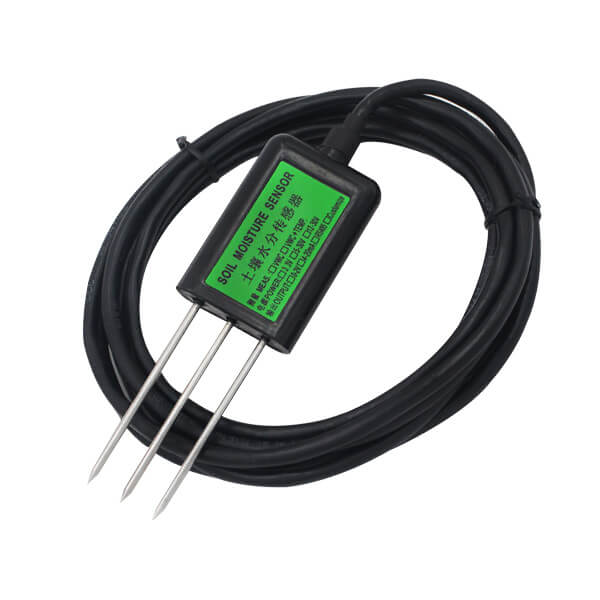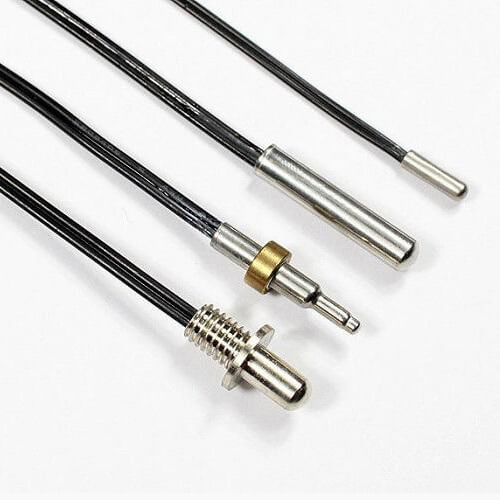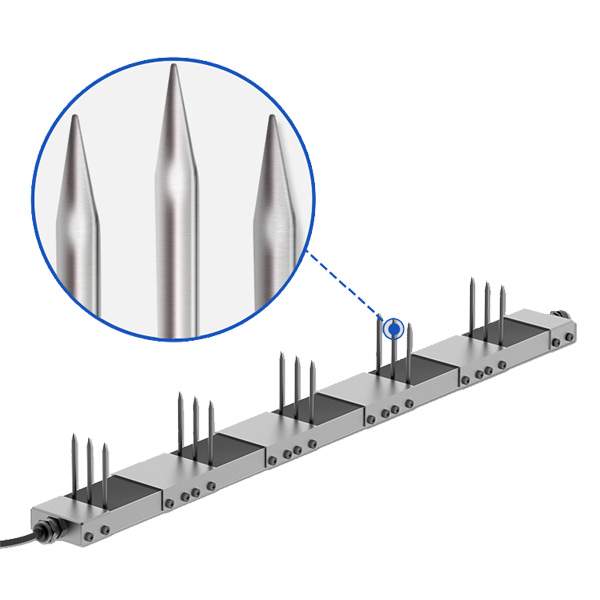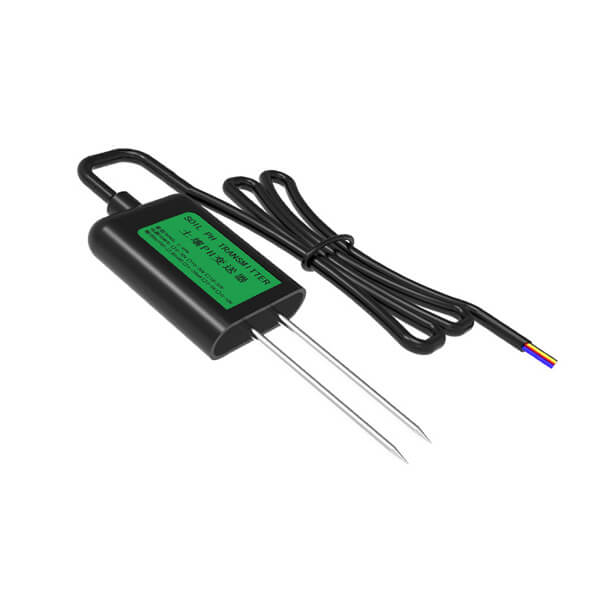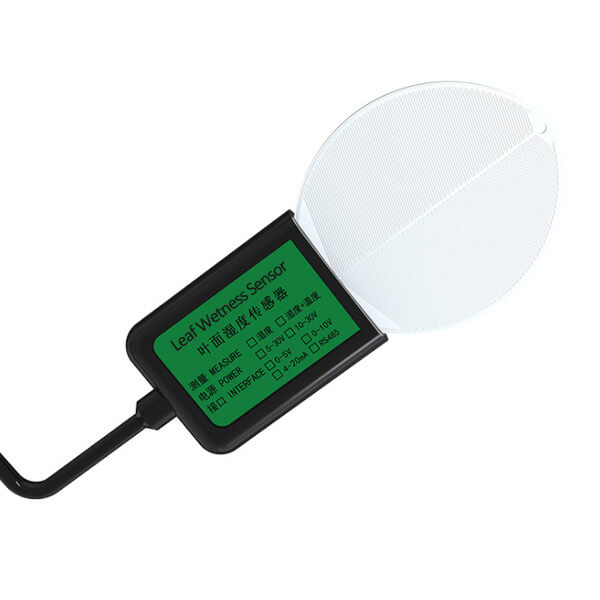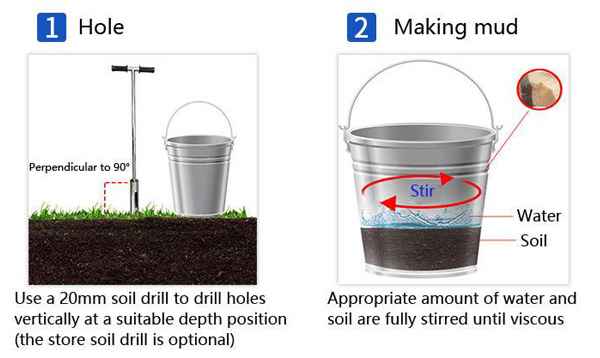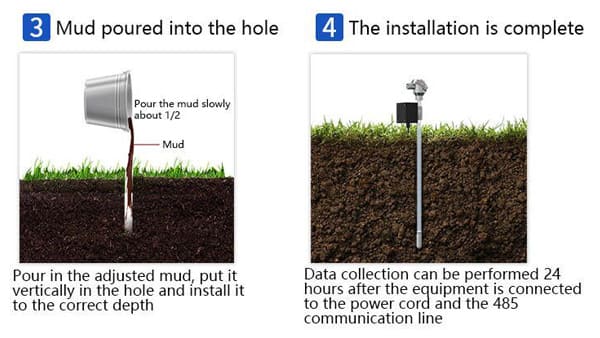Table of Contents Gardening is a thought-provoking and enjoyable activity. Sometimes, it’s not easy to figure out exactly how much water each plant needs. This
Soil Tensiometer
This soil tensiometer uses the principle of negative pressure to measure soil moisture and studies soil moisture movement from an energy perspective. The transparent PVC pipe can clearly see the water volume, and the low end is equipped with a high-quality clay head, which is fast and airtight, and the measurement is accurate. We offer rs485 soil tension meter and 4-20ma soil tension meter for your choice.
- Model: RS-TRZL-*-1-*-EX
- MOQ: 1 PCS
- Delivery date: within 24 hours
- Price: $78~$102.9
About soil tensiometer
The soil water tensiometer can accurately give an irrigation point. Clearly inform the grower whether the plants are short of water, how often they will be short of water, and how often they will be irrigated. Thereby improving the product and quality of crops.
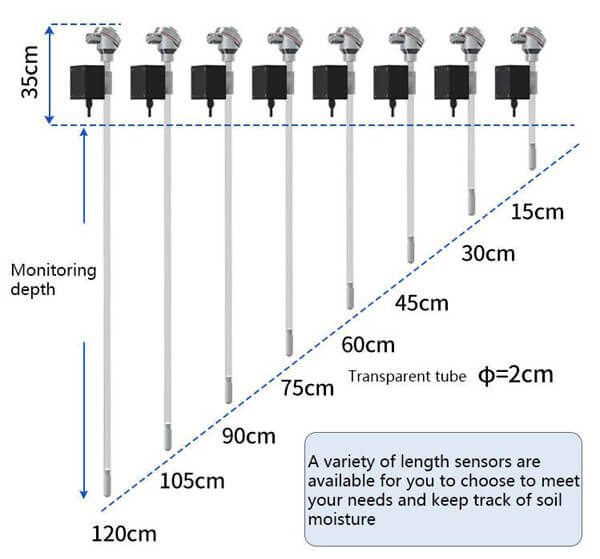
Soil tension meter description
This soil tensiometer is a common device used for measuring soil moisture in agricultural irrigation, providing growers with a cheap and reliable method of measuring soil moisture. The measurement process is not affected by soil salinity and does not require on-site calibration, which is very convenient. Our RS-TRZL-*-1-*-EX soil tension meter has measuring depths of 15cm, 30cm, 45cm, 60cm, 75cm, 90cm, 105cm, 120cm, etc., and supports customer customization. The overall appearance is composed of high-quality transparent PVC pipes and clay heads, which can visually display the soil moisture content. Renke soil tension sensor has two output types, RS485 and analog. The analog output is 4-20ma.
Features
1. The shell is made of transparent PVC plastic pipe, which can directly observe the water level, has a fast response speed, and effectively perceives the soil environment.
2. The high-quality clay head is used, which is fast and airtight and has high sensitivity.
3. Not affected by salt ions in the soil, agricultural activities such as chemical fertilizers, pesticides, and irrigation will not affect the measurement results, and the data is accurate.
4. Support 10-24V wide voltage power supply, support standard Modbus-RTU485 communication mode, the longest communication is 2000 meters, and also support 4~20mA current signal output.
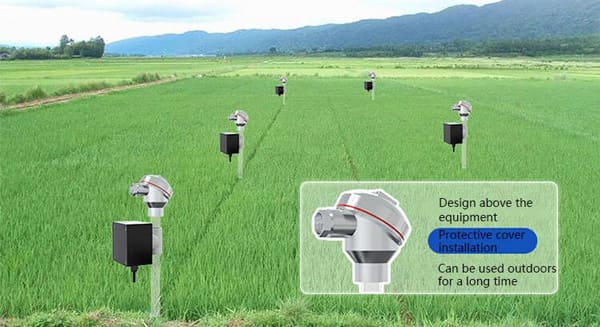
1. Soil Moisture Sensing
2. Soil Water Retention
3. Irrigation Management
4. Soil Physics
Soil tensiometer datasheets
| Working temperature | 0℃-60℃ |
| Measuring range | -100kpa-0 |
| Measurement accuracy | ±0.5kpa (25℃) |
| Resolution | 0.1kpa |
| Power supply | 10-24V wide DC power supply |
| Shell material | transparent PVC plastic pipe |
| Protection grade | IP67 |
| Output signal | RS485 (Modbus protocol), 4~20mA current output |
| Power consumption | RS485: 0.8W, 4~20mA: 0.5W |
| Response time | 200ms |
How to use soil tensiometer?
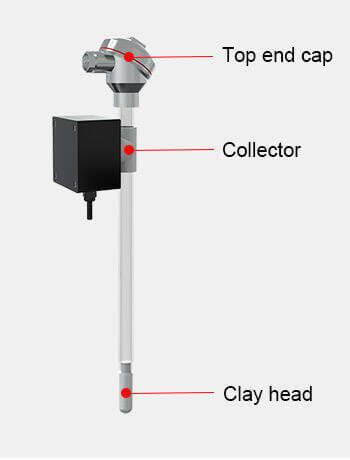
1. Prepare cold boiled water (there is no air in the water), boil tap water for 20 minutes, and let it cool for later use.
2. Exhaust the clay head, unscrew the cover of the top end cap, remove the silicone plug, tilt the device and slowly fill it with cold boiling water, fill it up, and stand the instrument upright for 10 minutes (without adding a cover), and see water from the clay head The surface drips out, then plug the silica gel plug, wrap the clay head with a paper towel to absorb water, and gently shake the device to exhaust as much as possible. When you see bubbles rising, the soil tension can reach -20kpa or higher. This process can be repeated 2-3 Second-rate.
3. Fill the equipment with cold boiled water, add a silica gel plug, and seal it upright. Let the clay head evaporate in the air for about half an hour. During the process, bubbles will be found on the pipe wall. At the same time, lightly Tap the device to make the bubbles rise.
4. Submerge the clay head in the water, wait until the soil tension is restored to within -10kpa, fill up again with water, plug the silica gel plug, screw on the top end cap, keep the clay head completely immersed in water, and set aside.
Precautions:
1. Avoid greasy dirt on the clay head to avoid clogging the micropores and causing the instrument to malfunction.
2. The measuring range of the instrument is -100Kpa-0. When this limit is exceeded, the instrument will leak air due to the rupture of the wall of the clay head tube.
3. Regularly check, fill the sensor with cold boiled water, fill it once every half a month to a month, and do not loosen the sensor during the filling process.
4. Before the temperature drops to 0°C, the outdoor instrument should be withdrawn to avoid freezing and cracking.
FAQs
More informations about soil tension sensor
What is soil tension?
Soil tension is the soil water potential, which is an index of soil moisture intensity. Its size is closely related to the fluidity and penetration depth of soil moisture, the effectiveness and difficulty of plants to absorb soil moisture. At the same time, it can indirectly reflect soil moisture. Generally speaking, the lower the soil moisture, the greater the soil tension, and the stronger the water suction, making it difficult for plants to absorb water in the soil. The greater the soil moisture, the weaker the soil’s suction power for water, and the easier it is for crops to absorb water from the soil.
How to install soil tensiometer?
How do soil tensiometers work?
The soil tension is composed of a pressure gauge, a PVC pipe and a ceramic probe. After the PVC pipe is filled with water, the ceramic probe is moist and can prevent external air from entering the ceramic probe. When there is a pressure difference between the water potential of the tested soil and the tensiometer, the water in the tensiometer penetrates into the tested soil until it reaches an equilibrium state. At this time, the value displayed by the pressure gauge is the water potential of the tested soil.
Why use a soil tensiometer?
Tensiometers indirectly measure soil moisture tension. After the tensiometers are installed, they can provide readings at the same location for a long period of time. Tensiometer readings are easy to interpret and indicate the soil moisture conditions experienced by plant roots. Soil salinity does not affect the reading.
How long is the warranty of the soil tensiometer?
A two-year warranty is provided for use in a normal environment.
Blogs
Table of Contents What is soil water? Soil water is a general term for all forms of water in the soil, including water present in
The commonly used communication method for data acquisition and control is RS485. RS485 is a general communication standard. It can not only link devices to
Table of Contents Many countries in the world are facing the problem of water shortage. Drinking water and irrigation water are very important to us.
Table of Contents A wise gardener knows how to grow up plants and flowers healthily in the garden. Because he will use tools to analyze
Soil moisture is the source of the survival of plants. Soil moisture refers to the moisture content of the soil. The moisture content of the
The weather sensors are the sensing end of the weather station and collect various weather-related data. The weather station can obtain the main parameters and
Soil moisture sensors are also known as soil moisture meters. It is mainly used for measuring soil volumetric water content, monitoring soil moisture, agricultural irrigation,
What is smart farming? Smart farming is the application of Internet of Things technology to traditional agriculture, using sensors and software to control agricultural production
Whether it is farmland or a garden, the most important thing for crops to grow and bloom beautifully is soil. Knowing our soil conditions can
Agricultural irrigation mainly refers to irrigation operations carried out in agricultural farming areas. Agricultural irrigation methods can generally be divided into traditional surface irrigation, ordinary
what is a soil moisture sensor? The soil moisture sensor is composed of a stainless steel probe and a waterproof probe, which can be buried
Water is an important part of plant growth, and plants cannot survive without water. Nutrients are the basis for the vigorous growth of plants. The

